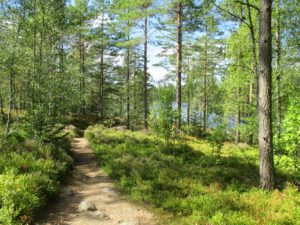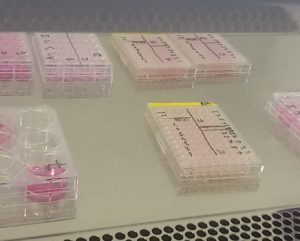To get some practical work experience, the students of MSc. Ecotoxicology have to perform an eight-week internship at an institute/organization of their choice, named AMOE. In this post, I will give you an inside view of my research work at the University of Örebro (Sweden).
For my AMEO internship, I went to the lovely country of Sweden to start a practical research work at the “Man-Technology-Environmental Research Centre” (MTM) at the University of Örebro. The research focus of MTM is on the impact of POPs, metals, emerging pollutants, including perfluorinated chemicals (PFCs), endocrine disruptors and plastic pollution on all parts of the biosphere. Therefore, chemists, biologists and environmental scientists are working hand in hand with each other to cover all environmental compartments.
In my project, I study the aryl-hydrocarbon receptor (AhR) mediated toxicity of Benzo(a)pyrene (BaP) and PCB126 alone and in combination with perfluorooctane sulfonate (PFOS) and perfluorhexanoic acid (PFHxA) in the rat hepatoma cell line H4IIE. In particular, mixture toxicity is of great concern since organisms are exposed to many pollutants in the environment. There is a lack of studies about effects of PFOS and PFHxA, which enhance the toxicity of common POPs via unspecific and specific modes of action.
In my project, I use the fluorescent Luciferase-Assay, a functional enzyme assay, which measures the CYP1A induction potential of the selected chemicals and their combinations via the AhR-mediated pathway. The induction of the detoxification enzyme Cytochrom P450 can lead to bioactivation of some compounds to even more toxic metabolites. Therefore, it is important to estimate the CYP1A induction potential of chemicals and elucidate their toxic mode of action via the aryl-hydrocarbon receptor signaling pathway.
Moreover, since lipophilic substances like POPs are known to adsorb onto microplastic, plastic particles will be spiked with BaP and PCB126 alone and also in combination with PFOS and PFHxA in the ongoing part of the project. An acidic extraction of the spiked microplastic particles will be performed to simulate stomach conditions of organisms, and extracts will be tested again with the Luciferase-Assay and the H4IIE cell line.
During my internship in Örebro, I learned a lot about how to address ecotoxicological questions and manage problems independently but I also enjoyed the relaxed Swedish way of working! 🙂
Finally, the Swedish nature is GREAT and I visited several nationalparks in the surrounding for hiking and swimming in the lakes. A good place to return!



